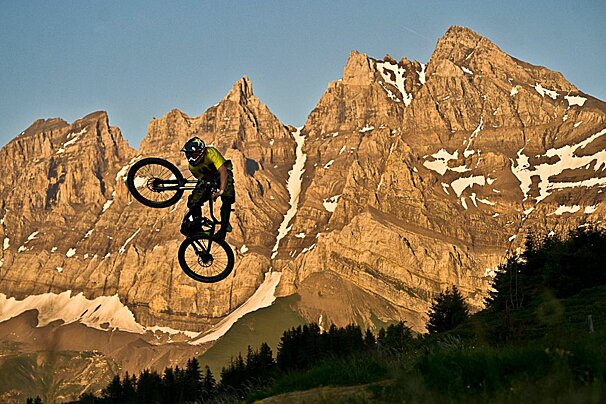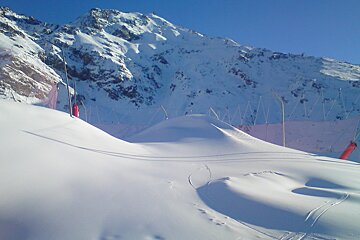
© Sam Birch
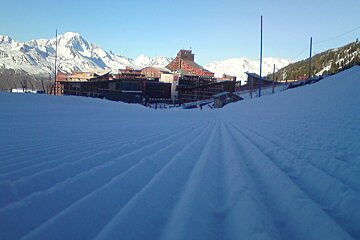
© Sam Birch

© Sam Birch

© Sam Birch

© Sam Birch
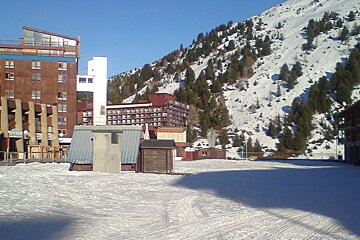
© Sam Birch

© Sam Birch

© Sam Birch
3, 2, 1, Snow!
Les Arcs ski area grand opening this Saturday
After waiting for what feels like forever, it is finally time for another winter season to begin. This year’s early start means that snow does not reach the lower resorts, but there should still be lots to enjoy this weekend.
The piste-bashers have been doing sterling work preparing the slopes and, above 2000 metres, the conditions are rather good. We are expecting more sun and blue skies in the near future, so visibility should be excellent.
This snow report will guide you through the best places to be over the next few days and, hopefully, will be a good guide to skiing at higher altitudes in Les Arcs: for early- or late-season conditions, or when there’s low-lying cloud, it’s worth knowing how to stay high up.
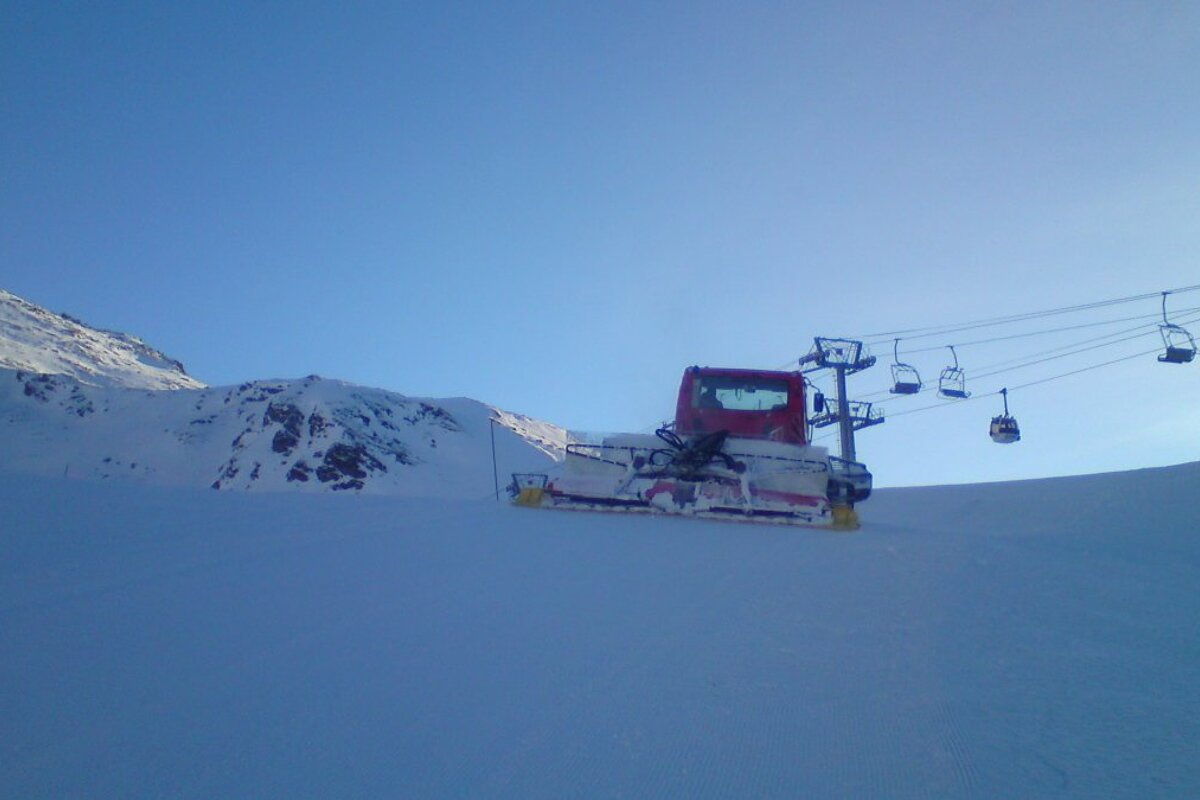
Arc 2000 and Arc 1950
The best conditions in Les Arcs should be in the Arc 2000 “bowl,” as practically everything is above 1950 metres. Both main resorts will be accessible directly from the pistes, with the lowest skiable point being the bottom of the Marmottes/Bois de l’Ours lifts. For beginners, the small St Jacques chairlift will provide access to some well-covered easy blue runs. The more adventurous should be able to use the Varet lift to join Arandelières (red) and Valleé de l’Arc (blue). It’s not impossible that the Aiguille Rouge run will open but, if it does, you will want to abandon it at the top of the Droset lift, returning to Arc 2000 via Réservoir (blue).
The two parallel chairlifts, Arcabulle and Plagnettes, which run to the Col de la Chal, at 2600 metres, are the most likely to be open. From the top you can take on some steeper red runs, as well as a couple of cruise-y blues, so you may decide to hit those two lifts for a while. The Col de la Chal should also provide access to the Arc 1800 and Peisey-Vallandry areas, although they will have less comprehensive snow coverage. It is worth checking to see if the Grand Col is open, as both of its runs are above 2500 metres. However, they are quite steep and technical, so not suitable for beginners (especially at this time of the season).
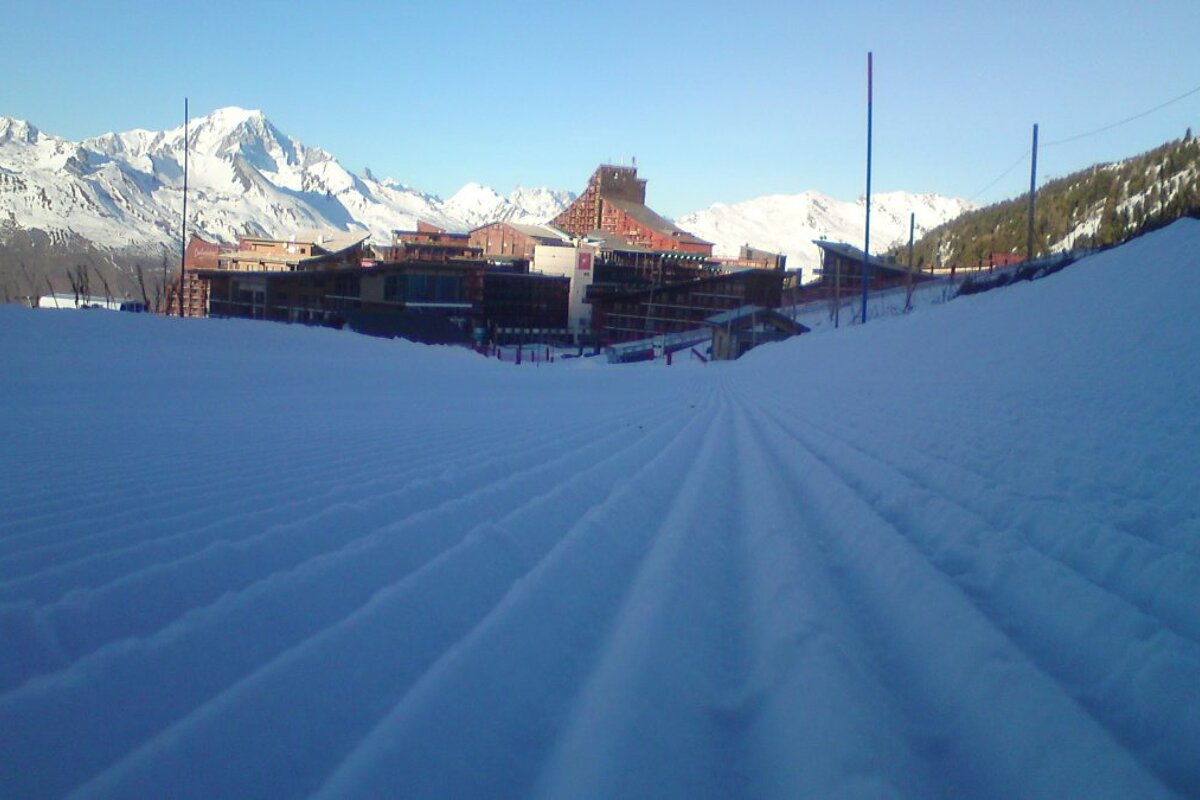
Arc 1600
Access to skiable pistes will probably be via the Mont Blanc or Cachette lift. Both open out onto the Belvédère run (blue) which leads down towards both the Clocheret and Arpette lifts. Clocheret is a traditional three-seat chairlift (which approaches very quickly, so be careful) leading to two very fun runs, which are often worth looping around a couple of times. There should be a number of pistes open from the top of the Arpette lift leading back down to its bottom, or you can transfer across into the Arc 2000/1950 area, where skiing should be more straightforward. When you want to return to Arc 1600, it is possible that you will have to go up Clocheret, then ski down Clapet (blue) to the top of the Cachette lift which will take you back to resort.
Arc 1800
The obvious choice from Arc 1800 is to take the Transarc bubble over to the Col de la Chal and enjoy the runs around Arc 2000. You can also ride the red runs back to the middle of the Transarc, where you can rejoin it at the central station (marked with “toilets” and “WiFi” signs on the piste map). Alternatively, stay left after the flat section of Grand Renard (red run) and head ‘round to the Derby lift which is between Arc 1800 and Vallandry. Carreley lift may be open, affording another option for skiing over to Arc 2000, or for dropping down to Arpette or Clocheret. Returning to Arc 1800 should be via the Transarc lift, or possibly Carreley.
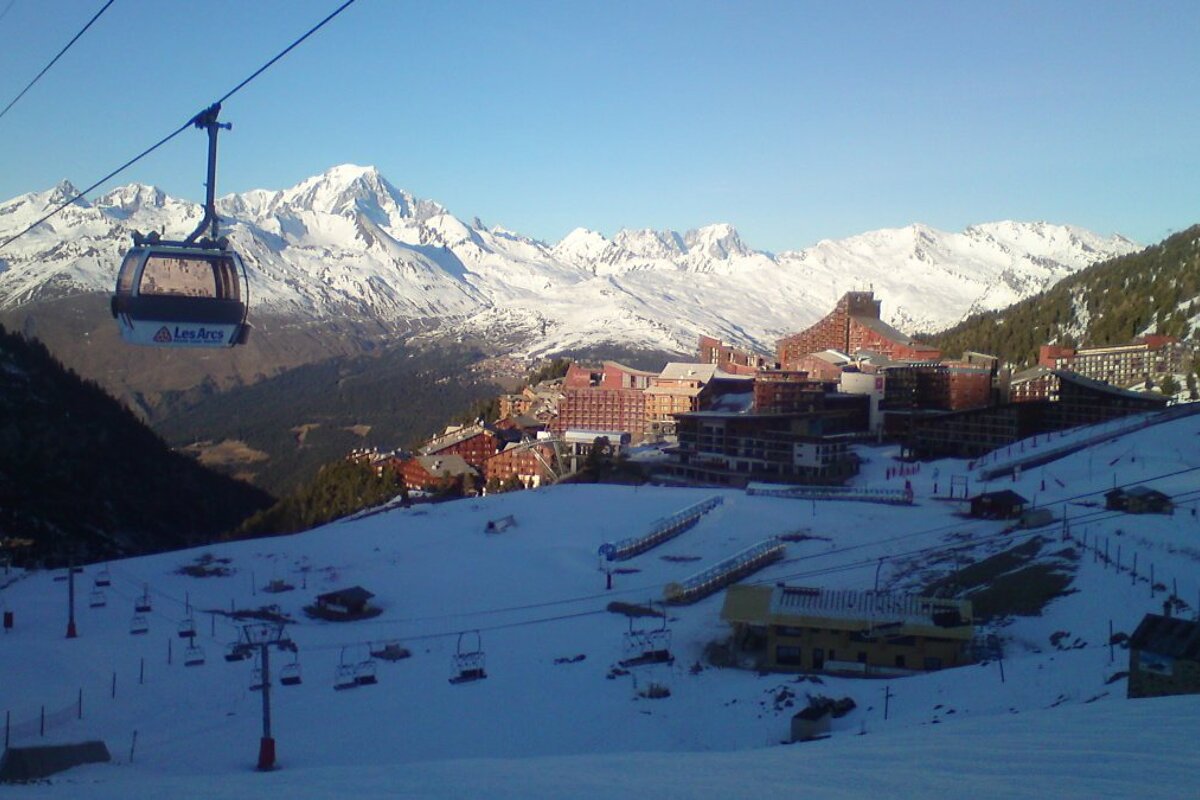
Peisey-Vallandry
Reaching the snow should be pretty easy from both resorts. The Peisey lift provides access to the high-altitude learners’ area around the Cabri drag-lift, which will be perfect for rank-beginners and those finding their snow-legs after some time out. There is another beginners’ area, complete with Flocon drag-lift, at the top of the Vallandry lift. From all of the main chairlifts (Peisey, Grizzly and Vallandry) you can drop onto the “2300” lift (sometimes simply called the “66”) so you can play around on the wide and well-linked snowfield.
From the bottom of the “2300,” stay right and follow Forêt (blue, tree-lined) to the bottom of the Derby lift. One trip up and you can take Traversée (blue) or Réches (red) to the middle of the Transarc lift. The best things about Derby, however, are the three runs (one of each colour) that return to its base. Provided Bosses, Bellette and Renard are all open, it is likely to be one of the best playgrounds for snow-heads at this stage of the season. To return to the villages, you will need to take “2300” and drop onto the top of the Peisey or Vallandry lifts, which can transport you back down.
Villaroger
Chances are, from Villaroger, you will need to take both the Plan des Violettes and Droset lifts to access the snow-rich Arc 2000 area. To return, it will be a trip up Lanchettes from central Arc 2000, then a short red-run to the top of the Drosets lift where you can start your two-lift descent to the village.
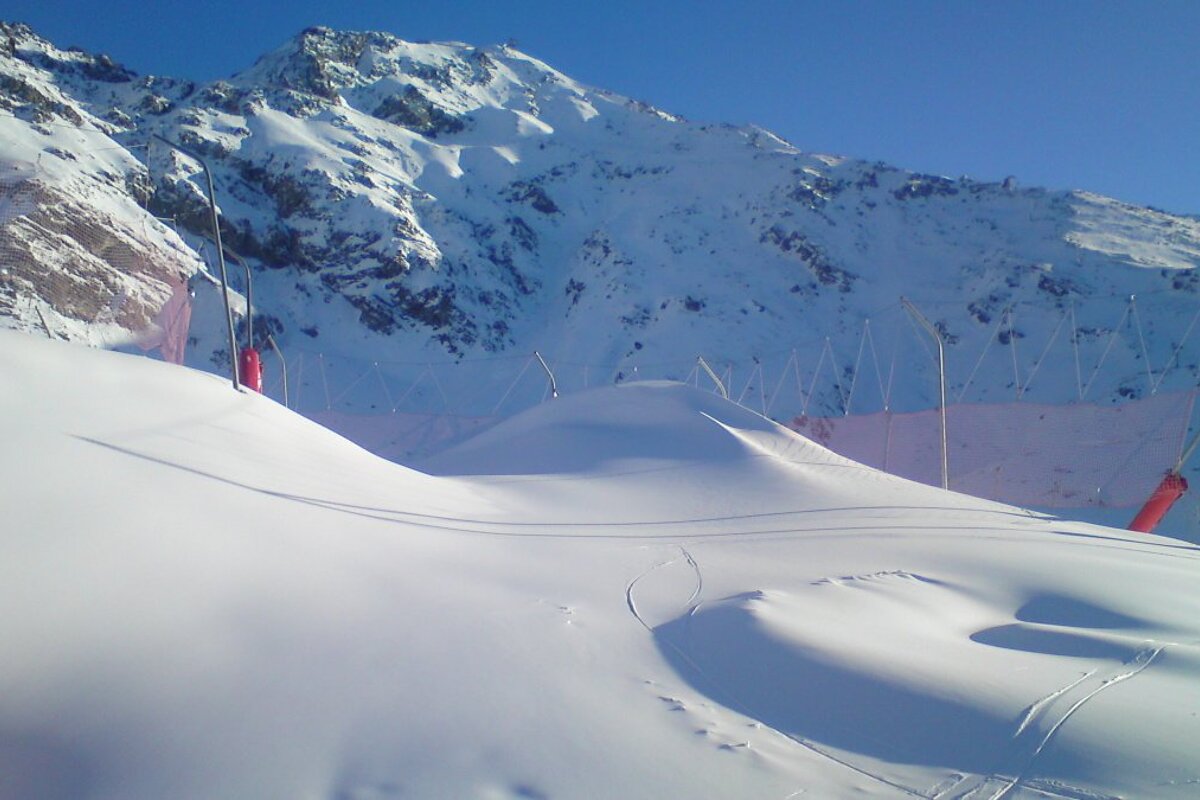
Practical Points
Everything written above is what I think will happen based on previous experience and the conditions I’ve seen (in person and on webcams). It may not be completely accurate. Therefore, before you head out onto the slopes, make sure you have a new lift map and an idea of which lifts/pistes are open. Every day, ask mountain security (ADS) about getting back to resort and ensure you give yourself plenty of time to return, in case your previously planned route is not available. If you do end up in a different resort, and are too tired to schlep back across the mountain, remember there are free local shuttles between some of the villages. Also, we are expecting glorious weather, so wear sun screen.
Check out our next snow report for comprehensive first-hand experience of the conditions across Les Arcs.



















